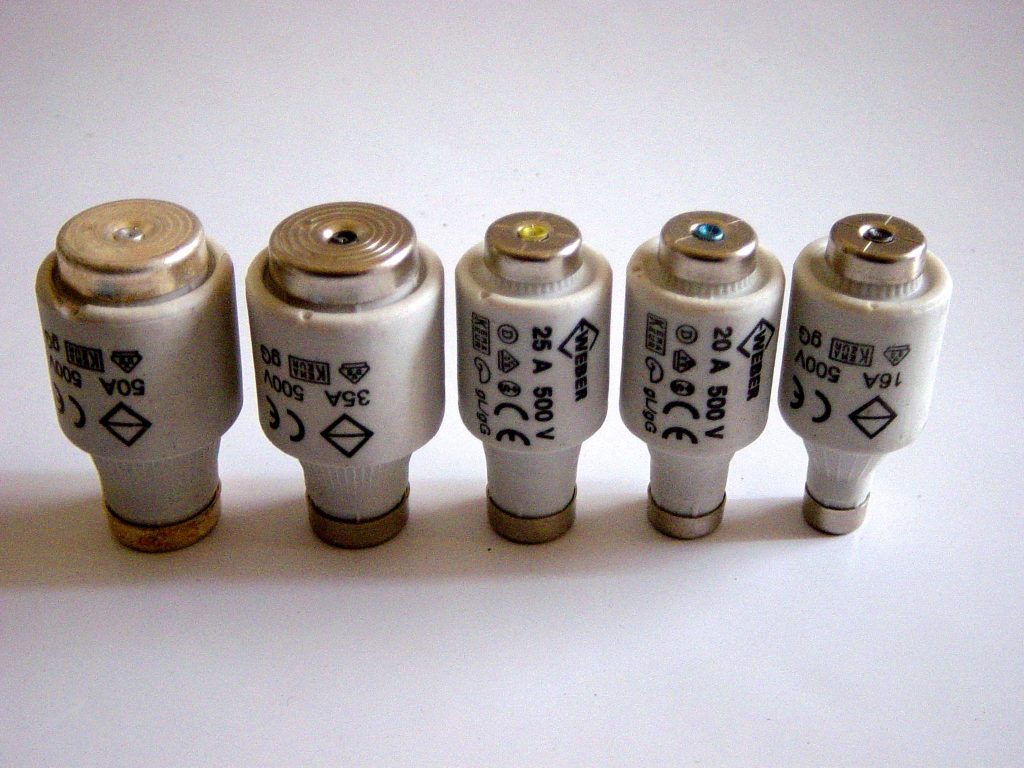An overload protection device, or OCPD, must be installed on all electrical circuits, such as those in your home. The quantity of amperage running throughout a wire or circuit is called current, and each wire or circuit has a maximum rated current.
The OCPD switches off the electricity to the circuit when this voltage is exceeded, avoiding fires and other significant hazards. NOWADAYS, the OCPD utilized on all circuits in most homes is a circuit breaker. The OCPD will likely be a fuse in old buildings with outdated electrical systems. Screw-in fuses are used in standard lights and outlet circuits. Cartridge switches protect high-voltage circuits, including those for electric stoves and dryers.
Manufacturing
Cartridge fuses have been manufactured for over a century, and there is currently a considerable number in use worldwide. They are responsible for safeguarding equipment and electrical networks and ensuring that the impacts of malfunctions, which are unavoidable, are minimized. That supply to customers is sustained at a high level.
Cartridge fuses are well-known among electrical engineers and practically all members of the general public, and the widespread perception is that they are simple devices in every way. While their manufacture is not complicated, they must be carefully planned and constructed to guarantee that they work as expected.
What Is a Cartridge Fuse?
A cartridge is a security feature that safeguards against electrical load variations & short circuits are a cartridge. A fuse is an electrical, electronic, or structural device that protects circuits from overcurrent and overload and ensures circuit protection. Thomas Alva Edison devised the electric fuse in 1890. Fuse comes in various shapes and sizes, but they all serve the same purpose.
The OCPD cuts off the power to the circuit when this current is exceeded, averting fires and other major risks. The OCPD utilised on every circuit in the majority of homes nowadays is a circuit breaker. The OCPD is probably a fuse in homes with older electrical systems.
What Are Cartridge Fuses and How Do They Work?
In an electrical circuit, all fuses, even cartridge fuses, are the “weak link.” A metal strip is attached to both metallic ends of something like the fuse body inside the fuse. The metal bar, or link, heats up and quickly melts if there is a short or defect anywhere in the circuit or if the circuit is overloaded, exposing the circuit & shutting off the electricity. It’s similar to a light switch that only turns off once before needing to be replaced.
Cartridge Fuses types
Cartridge fuses have contact terminals on both ends and are cylindrical. They’re designed for circuits with a current of 30 amps or more and 240 volts. Cartridge fuses are divided into two categories.
- Fuse with ferrules has a rating of up, including 60 amps. They have a long cylindrical cap upon every end and resemble the fuses found inside the plug end of Christmas lights in size.
- The ferrule-type cartridge fuse’s big brother is the knife-blade cartridge fuse. It has a similar design, but each end has a thin metal blade. Knife-blade fuses safeguard circuits with currents ranging from 60 to 600 amps.
Cartridge Fuses: Where Can You Find Them?
Many older electrical systems include two or maybe more fuse blocks, each holding two cartridge fuses (as opposed to current breaker boxes). The main fuse has been one of the fuse blocks. This is the OCPD for the complete fuse box and all of the house’s branch circuits. Powerful electric appliances, such as dryers, ranges, air conditioning systems, baseboard heaters, and electric water heaters, are housed in the other blocks.
Gently remove the wire bail or hook of the fuse block to gain access to the fuses inside. Take out the block with one hand to reduce the risk of electricity if anything goes wrong. Extract the block from the box altogether.
To efficiently remove a fuse from its block, use a fuse puller, a plastic pliers-like tool, or other electrically insulating material. Reinstall the fuses in the same manner as the originals.
Read More: What Is The Legendary Mechanic? The Facts You Should Know About Legendary Mechanics
Classification of fuse
Fuses are classed as “One Time Only Fuse,” “Resettable Fuse,” “Current limiting and non–current restricting fuses,” and “Current limiting & non–current-limiting fuses” based on their application.
When an overvoltage, overload, or inadequate load connect event happens, the user must manually change the fuses. Switch fuses are inexpensive and widely utilized in practically all electrical & electronics systems. When a problem arises in the system, the Resettable fuse, on the other hand, automatically resets after the operation. Current limiting fuses produce high reluctance for quite a short time, but non-current limiting fuses produce an arc in the event of a high current flow, interrupting the circuit.
Fuses for automobiles, blade type, and bolted type
The plastic body of these fuses (also known as a spade or plug-in fuses) has two metal caps that fit into the socket. They’re primarily utilised in cars for wiring and short protective devices. Glass Tube Fuse Limiters (also referred to as Bosch Fuse) are commonly used in the automobile industry. Automobile fuses have voltage ratings ranging from 12 to 42 volts.
Chip, Radial, & Lead Fuses are all types of SMD Fuses (Surface Mount Fuses).
SMD Fuses (Surface Mount Device, from SMT = Surface Mount Technology) are chip-type fuses (also referred to as electronic fuses) used during DC power systems such as hard drives, DVD players, cameras, and cell phones. Although SMD fuses are pretty small and difficult to repair, space is a significant consideration.
FAQ’s
Apart from this if you are interested to know more about A List Of Services Offered By The Electrician then visit our HOME IMPROVEMENT category.

